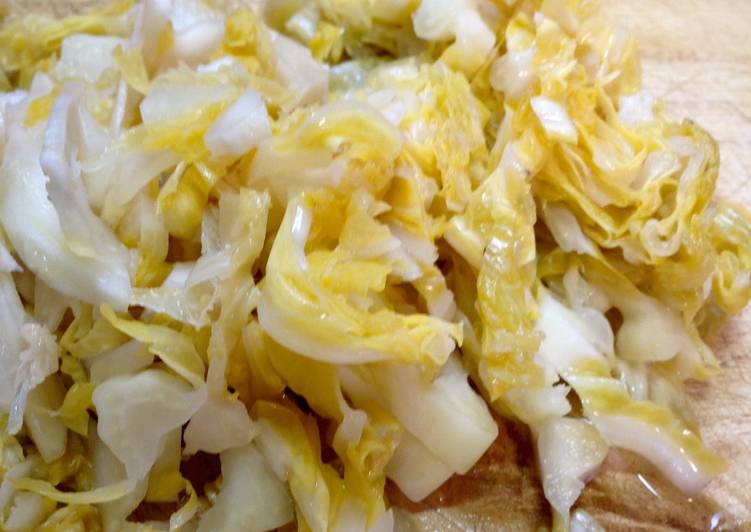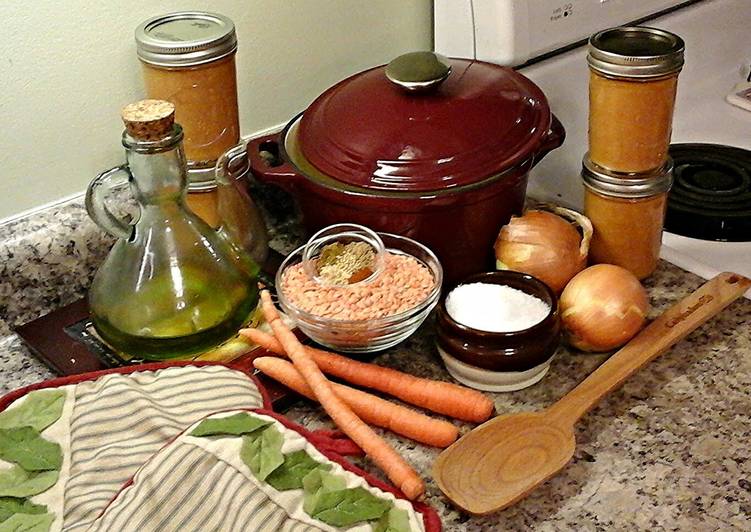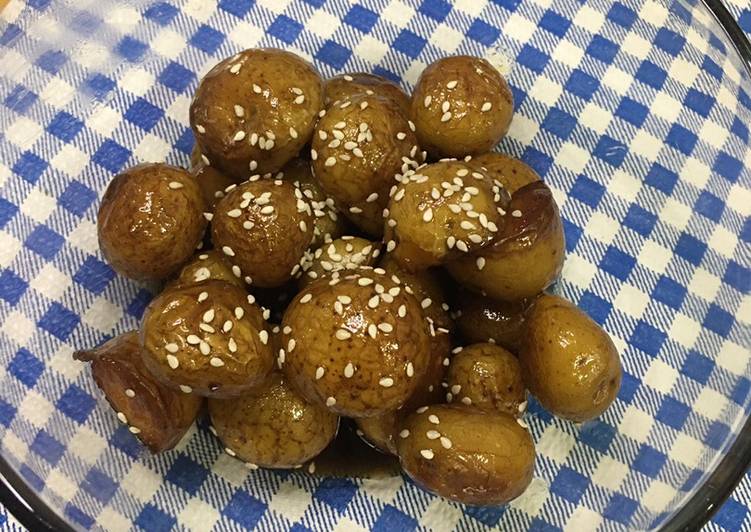
Hello everybody, I hope you’re having an amazing day today. Today, we’re going to make a distinctive dish, homemade sauerkraut (brine method for whole, half or quartered cabbage). It is one of my favorites. This time, I will make it a bit unique. This will be really delicious.
Dissolve salt in hot water until no more grains are visible. I usually cut my cabbage in half or in quarters. This cabbage here is a called "filderkraut" or "spitzkohl" because of its shape.
Homemade Sauerkraut (Brine method for whole, half or quartered cabbage) is one of the most popular of current trending foods on earth. It is easy, it is quick, it tastes delicious. It is enjoyed by millions daily. Homemade Sauerkraut (Brine method for whole, half or quartered cabbage) is something that I have loved my entire life. They’re fine and they look wonderful.
To begin with this recipe, we must prepare a few ingredients. You can have homemade sauerkraut (brine method for whole, half or quartered cabbage) using 3 ingredients and 11 steps. Here is how you cook it.
The ingredients needed to make Homemade Sauerkraut (Brine method for whole, half or quartered cabbage):
- Take 750 g Cabbage (1 medium)
- Take 2000 ml water
- Get 100 g salt
When life gives you cabbage, you make sauerkraut — and homemade sauerkraut is a Sauerkraut is made by a process called lacto-fermentation. To put it (fairly) simply: There is beneficial When submerged in a brine, the bacteria begin to convert sugars in the cabbage into lactic acid; this is a. Turning cabbage into sauerkraut is one of the easiest fermented foods to master. Why is this sauerkraut better for you?
Instructions to make Homemade Sauerkraut (Brine method for whole, half or quartered cabbage):
- Dissolve salt in hot water until no more grains are visible. Let cool completely.
- I usually cut my cabbage in half or in quarters. This cabbage here is a called "filderkraut" or "spitzkohl" because of its shape. Apparently it's good for sauerkraut, heh. Anyway you can use whatever kind of cabbage you want.
- Put whole or halved cabbage into a bucket or ceramic crock. Pour in the the cooled salt brine solution.
- The cabbage needs to be completely submerged under the water, so you need to weigh it down with something. I usually lay some plastic wrap over the top of the cabbage and then put a plate top.
- On top of that I put a heavy weigh like a jug of water, etc. (make sure the plate and the weight are washed and clean). Here I'm using a special ceramic weight for fermenting vegetables. Cover with a lid or cloth to keep things out of the container.
- Now just wait for the fermentation to happen! You'll probably start seeing bubbles after a couple days. Check the sauerkraut every day or two and skim off the bubbles. Make sure you label the date on your sauerkraut so you know how long it's been fermenting!
- The time you need to ferment depends on how warm or cold it is, as well as your taste preference. For me, in the winter I usually give the sauerkraut at least 4 weeks up to 6 weeks. In spring/autumn, maybe around 2-3 weeks. Summer could be 1-2 weeks, but if it's VERY hot, the sauerkraut won't taste that great, so I'd avoid hot weather.
- You can test by taking out the cabbage. It should have become somewhat softened and yellowish in color. It's okay to cut the whole cabbage open and check/taste the center. If you want it to ferment longer, just return it to the crock and let it go for another few days or longer.
- You can also start eating it "young" and keep fermenting the rest for longer so you can enjoy different stages of maturity. Just take some out and cut it up and return the rest of the chunk. If you don't want it to ferment anymore, then move the sauerkraut to the refrigerator.
- NOTE 1: The water will start to become cloudy/white-ish after several days or a week or two if it's cold. It's very likely you can get some white wrinkly, filmy looking mold developing at the surface of the water which is OKAY! You do not need to throw away the sauerkraut. Just continue to skim off as much as you can every day. Under the water the sauerkraut bacteria are creating an acidic, sour environment that prevents any "bad" bacteria and mold from surviving.
- NOTE 2: The sauerkraut will probably be smelly. That's OKAY too! It's just product of the fermentation process. Whenever I open the lid to check my sauerkraut, I open a window or turn on the ventilation fan :P
This allows us to ferment the cabbage under a brine in an oxygen-free environment without killing the Lactobacillus. Many other types of bacteria don't handle salt or lack of. Learn how to make sauerkraut in a jar using my proven instructions. This tangy homemade sauerkraut gets the stamp of approval from kids and adults alike. The brine that was created will keep your sauerkraut safe from harmful bacteria while it is fermenting.
So that is going to wrap it up with this special food homemade sauerkraut (brine method for whole, half or quartered cabbage) recipe. Thank you very much for reading. I am confident that you can make this at home. There is gonna be interesting food in home recipes coming up. Remember to bookmark this page in your browser, and share it to your loved ones, friends and colleague. Thank you for reading. Go on get cooking!


